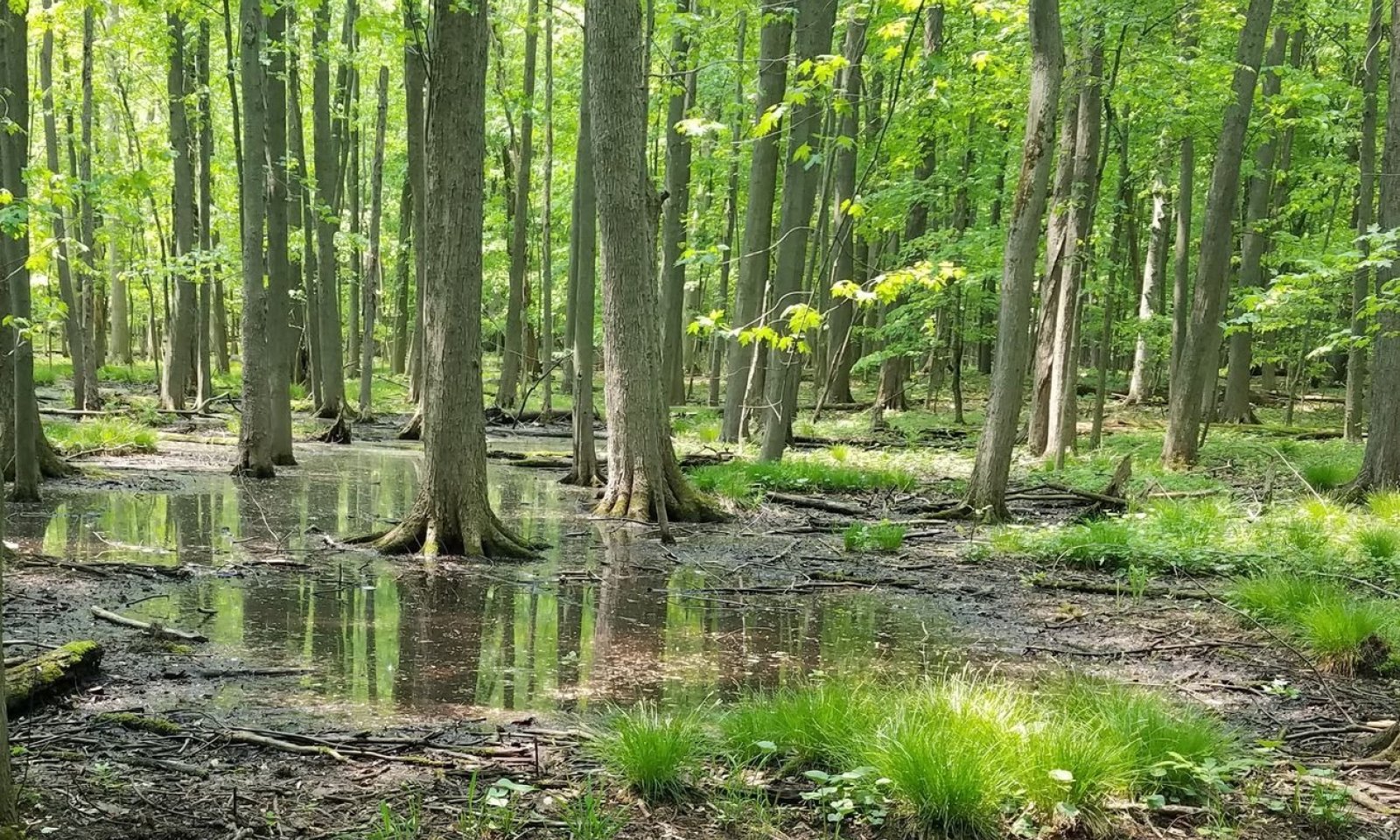

Natural Resources
Conservation Service
Ecological site F097XA023MI
Wet Loamy Depression
Last updated: 1/16/2024
Accessed: 04/07/2025
General information
Provisional. A provisional ecological site description has undergone quality control and quality assurance review. It contains a working state and transition model and enough information to identify the ecological site.
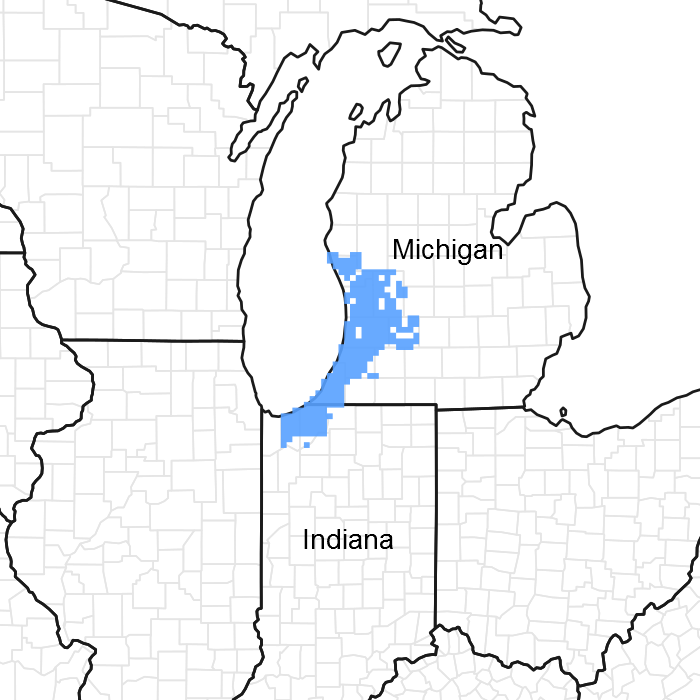
Figure 1. Mapped extent
Areas shown in blue indicate the maximum mapped extent of this ecological site. Other ecological sites likely occur within the highlighted areas. It is also possible for this ecological site to occur outside of highlighted areas if detailed soil survey has not been completed or recently updated.
MLRA notes
Major Land Resource Area (MLRA): 097X–Southwestern Michigan Fruit and Vegetable Crop Belt
Physiography consists of sandy lake plains and dunes along the western side adjacent to Lake Michigan, and moderately sloping fine-loamy moraine from the Lake Michigan lobe of the Wisconsin Ice Sheet.
Vegetation is mostly mesophytic forests of central and northern hardwood and conifer species with prairie and oak savanna to the south. Compared to inland locations, cold sensitive hardwood species extend further north due to milder winters, and conifers extend further south due to cooler summers, heavier snowfall, and sandier soils. Lake effect snow and delayed spring warm up dampen the fire frequency relative to similar inland sites, except along the south side of Lake Michigan. The northern extent is defined by a major floristic boundary where several central hardwoods species drop out. The southern boundary is defined by fine-loamy moraines with predominantly prairie vegetation.
The ecological site inference area for MLRA 97 is subdivided along a floristic/climatic break roughly from New Buffalo, Michigan to Portage, Indiana. This corresponds to the heaviest lake effect snow belt (>160 cm) south and east of this line and is associated lower historic fire frequencies. The snow belt portion “A”, has more frequent conifer and beech, while the less snowy portion “B” has more prairie and savanna elements. Although differing in precise boundary location, both USFS and EPA ecoregions support a climatic/floristic break at the next higher rank in their respective hierarchies.
Classification relationships
Among the USFS ecoregional framework (Cleland et al., 2007), most of MLRA 97 is represented by the Humid Temperate Domain (200), Hot Continental Division (220), Midwest Broadleaf Forest Province (222), South Central Great Lakes Section (222J), subsections 222Ja and 222Jb. MLRA 97 was recently extended northward to be more consistent with the limits of the USFS ecoregions subsections 222Ja and 222Jb, because it is more consistent with vegetation patterns and species distributions. A former portion of MLRA 97 that extended westward from the southern end of Lake Michigan (including most of the city of Chicago) was recently removed from the MLRA due to its predominantly non-sandy deposits and reduced lake effect climate, and would have overlapped USFS ecoregion 222K.
Among the EPA ecoregional framework (Omernik and Griffith, 2014), most of MLRA 97 falls within Eastern Temperate Forests (Level I: 8), Mixed Wood Plains (Level II: 8.1), Southern Michigan/Northern Indiana Drift Plains (Level III: 56), and Level IV: 56d and 56f. Ecoregion 56f continues north beyond MLRA 97. Former portions of MLRA 97 that encompassed the city of Chicago included Level III ecoregion 54, Central Corn Belt Plains, before the last revision of MRLA boundaries.
Ecological site concept
Depressions on fine-loamy to clayey glacial till deposits from the Lake Border and Valparaiso Moraines.
Associated sites
| F097XA022MI |
Moist Loamy Drift Plains |
|---|---|
| F097XA031MI |
Acidic Peaty Depression |
Similar sites
| R097XB047IL |
Chicago Wet Clayey Flats |
|---|
Table 1. Dominant plant species
| Tree |
(1) Acer saccharinum |
|---|---|
| Shrub |
Not specified |
| Herbaceous |
(1) Onoclea sensibilis |
Physiographic features
Depressions on fine-loamy to clayey glacial till deposits from the Lake Border and Valparaiso Moraines.
Table 2. Representative physiographic features
| Landforms |
(1)
Till plain
|
|---|---|
| Runoff class | Negligible to low |
| Ponding duration | Brief (2 to 7 days) to very long (more than 30 days) |
| Ponding frequency | Occasional to frequent |
| Elevation | 177 – 310 m |
| Water table depth | 0 – 25 cm |
| Aspect | Aspect is not a significant factor |
Climatic features
The southeastern Lake Michigan lake plain and adjacent lake influenced moraines have a humid warm continental climate with cold winters and warm summers. About 55%-61% of the precipitation is distributed during the warmer half of the year with a significant portion of the precipitation occurring as heavy downpours during thunderstorms. Thunderstorm activity is enhanced inland by lake breeze fronts, while it is diminished near the lakeshore by the stabilizing effect of the cooler lake waters. Occasionally, thunderstorm microbursts cause localized high winds which open single tree gaps in forest canopies, or more rarely, tornados and derechos (severe straight-line winds) open larger gaps. Fall storms bring more frequent strong winds, but with impacts moderated by the lack of leaves (wind resistance) in the canopy. During July, average precipitation lags potential evapotranspiration, resulting in droughty conditions in the upper soil horizons of upland sites. During dry years, this droughty period is extended into August and September, resulting in dry fuels and potential for wildfire over oak and pine dominated areas.
Winter precipitation is enhanced by lake effect snows, with 1.6 to 2.4 m (40-95 inches) falling annually within the snow belt. Peak snowfall occurs at intermediate distances from the lake where topography enhances uplift. The combination of heavier winter snowfall, lake-delayed spring warm up, and frequent wetlands all contribute to relatively lower fire frequencies relative to inland locations with similarly droughty soils.
The area falls within USDA Hardiness zones 6a and 6b and has delayed spring warm up until after the last killing frosts, allowing for a wide range of fruit crops to be grown. Frost free days peak more than 175 days along Lake Michigan, whereas typical values are around 150-160 days. A small inland area contiguous with the outwash plains to the northeast may be less than 135 days. The 1981-2010 period was somewhat wetter and warmer than the 1971-2000 period. The warming trend was most pronounced during winter months.
Table 3. Representative climatic features
| Frost-free period (characteristic range) | 123-143 days |
|---|---|
| Freeze-free period (characteristic range) | 149-188 days |
| Precipitation total (characteristic range) | 864-991 mm |
| Frost-free period (actual range) | 119-149 days |
| Freeze-free period (actual range) | 141-195 days |
| Precipitation total (actual range) | 838-1,041 mm |
| Frost-free period (average) | 132 days |
| Freeze-free period (average) | 165 days |
| Precipitation total (average) | 940 mm |
Figure 2. Monthly precipitation range
Figure 3. Monthly minimum temperature range
Figure 4. Monthly maximum temperature range
Figure 5. Monthly average minimum and maximum temperature
Figure 6. Annual precipitation pattern
Figure 7. Annual average temperature pattern
Climate stations used
-
(1) BLOOMINGDALE [USC00200864], Bloomingdale, MI
-
(2) HOLLAND WTP [USC00203858], Holland, MI
-
(3) MUSKEGON CO AP [USW00014840], Muskegon, MI
-
(4) GRAND RAPIDS [USW00094860], Grand Rapids, MI
-
(5) ALLEGAN 5NE [USC00200128], Allegan, MI
-
(6) EAU CLAIRE 4 NE [USC00202445], Dowagiac, MI
-
(7) GRAND HAVEN FIRE DEPT [USC00203290], Grand Haven, MI
Influencing water features
Perched watertable within 25 cm, sometimes seasonally dry.
Soil features
Soils are poorly drained to very poorly drained fine loams and clays. They are commonly classified as Typic Argiaquolls, Mollic Haplaquepts, and Typic Endoaquolls, and commonly mapped as Pewamo, Milford, and Parkhill series.
Table 4. Representative soil features
| Parent material |
(1)
Drift
|
|---|---|
| Surface texture |
(1) Loam |
| Drainage class | Very poorly drained to poorly drained |
| Permeability class | Moderately slow to moderately rapid |
| Soil depth | 201 cm |
| Surface fragment cover <=3" | 0 – 10% |
| Surface fragment cover >3" | 0 – 5% |
| Available water capacity (0-100.1cm) |
13 – 22 cm |
| Soil reaction (1:1 water) (0-50cm) |
5.5 – 7 |
| Subsurface fragment volume <=3" (0-150.1cm) |
0 – 35% |
| Subsurface fragment volume >3" (0-150.1cm) |
0 – 15% |
Ecological dynamics
The reference community of Wet Loamy Depressions is swamp forest dominated by Acer saccharinum (silver maple), Fraxinus pennsylvanica (green ash), Ulmus americana (American elm), Quercus bicolor (swamp white oak), and Populus deltoides (eastern cottonwood), with an understory of Onoclea sensibilis (sensitive fern), Carex grayi (Gray's sedge), Glyceria striata (fowl mannagrass), and Boehmeria cylindrica (smallspike false nettle). The high fertility and seasonal ponding of this mineral soil site results in a species composition similar to that of floodplains. Wet anoxic soils favor facultative and obligate wetland species.
Hydrology affects the spatial zonation while changes in precipitation patterns and beaver flooding affects community dynamics. Windthrow is a frequent disturbance due to shallow rooting of tree in wet soils, but usually consists of single tree gaps, favoring the already established young, mainly intermediate to shade tolerant species to fill the gaps. Fire occurs infrequently in swamp forest where fuels are typically discontinuous, and adjacent uplands are mesophytic forest. In some landscape settings adjacent to oak savanna, fires may carry into a wet meadow community phase. The degree of permeability of deeper soil layers affects the degree to which the hydrology is dominated by a steady water table or more subjected to short term droughts and surface runoff events.
The speed of succession in wet meadows and shrub thickets is slowed by wet hydrology. But because these sites are only seasonally wet, most instances of open communities in this ecological site will quickly succeed to swamp forest.
Sedge dominated wet meadow may dominate the site for the first 10 years after a tree and shrub mortality event such as from fire (every 1000 years) or ponding (every 300 years). Shrub thickets may dominate the site for up to 30 years before conversion to forest. Trees establishing under shrubs surpass the shrubs at 3-5 m tall. At 30-80 years, the canopy will exceed 10 m. In absence of disturbance the forest at 80-400 years may exceed 30 m tall. As a tree approaches the maximum height of the forest, it is at constant risk of being toppled by windthrow, especially with shallower rooting depths in hydric mineral soils (this effect is even worse for structurally weak organic soils). Shade intolerant and fast-growing species like Populus deltoides and Salix nigra may persist to 100 years, but earlier canopy emergence, lower density wood (increased wood-rot) all conspire to more quickly thin these species without replacement, due to shade. Longer lived trees may persist but will also tend to replace themselves with understory recruitment (advanced regeneration), having seedlings and saplings able to tolerate moderate amounts of shade. Upland species (e.g. species from adjacent upland forests: Acer saccharum, Tilia americana, Quercus rubra, Quercus macrocarpa, and Fagus grandifolia) may also be present on tip-up mounds, where roots are elevated above the water table. Transitional to wet sandy depressions and mucky depressions in more permeable substrates and less dynamic water tables, the overstory composition shifts towards species less tolerant of long period inundation such as Acer rubrum and Fraxinus nigrum.
For most of the flora there is a tradeoff between shade tolerance and flood tolerance. Consequently, some of the species most tolerant of wetness are among the least shade tolerant. The hydric species Acer saccharinum, Fraxinus pennsylvanica, Ulmus americana, and Quercus bicolor are all intermediate in shade tolerance, but are the most tolerant among the hydric species (especially Acer saccharinum). Populus deltoides and most Salix spp. Cephalanthus occidentalis and Alnus rugosa are very shade intolerant. Acer saccharinum, Populus deltoides, Salix nigra, and Cephalanthus occidentalis can persist long periods in standing water. The understory of a ponded swamp forest tends to be sparse, whereas less inundated areas may have thick understory intermediately shade tolerant Lindera benzoin, Ilex verticillata, Zanthoxylum americanum, Sambucus canadensis, and Sambucus racemosa, species which may also occur in open shrub thickets. Open shrub thickets have a variable composition of shade intolerant shrubs: Cornus obliqua, Cornus racemosa, Cornus sericea, Salix interior, Salix petiolaris, Salix eriocephala, Salix sericea.
The seeds of swamp species often lack dormancy because they must be able to germinate mid-growing season while water tables are low, and not be washed away during the winter. Because the sites tend to maintain surface moisture throughout the growing season, seedlings of many genera (Acer, Fraxinus, Ulmus, and Populus) do not need the extra provisions for quickly establishing deep taproots, enabling a strategy of small, prolific winged fruits or seeds capable dispersing longer distances to smaller wetland patches. Nevertheless, the site supports the coexistence of the large-seeded genera (e.g. Quercus and Carya), as reproductive tradeoffs are not absolute.
Invasive plants like Frangula alnus, Alliaria petiolata, Berberis thunbergii, and Rosa multiflora have greatly affected the dominant species composition. More than a few percentages of these species render the stand semi-natural. The introduction of Dutch elm disease and emerald ash borer have substantially reduced the importance of Ulmus americana and Fraxinus pennsylvanica. It is common to find snags associated with dead Ulmus and Fraxinus, as well has extensive down woody debris in stands where dominance of Fraxinus was more recent. Ulmus has been able to sexually reproduce and maintain itself decades after the initial disease introduction. The current flux of Fraxinus seedlings and saplings is apparently remnant reproduction from trees that managed to reach maturity prior to arrival of the invasive borer.
State and transition model
More interactive model formats are also available.
View Interactive Models
Click on state and transition labels to scroll to the respective text
Ecosystem states
States 1 and 5 (additional transitions)
State 1 submodel, plant communities
Communities 2 and 5 (additional pathways)
State 2 submodel, plant communities
State 3 submodel, plant communities
State 4 submodel, plant communities
State 5 submodel, plant communities
State 1
Reference State
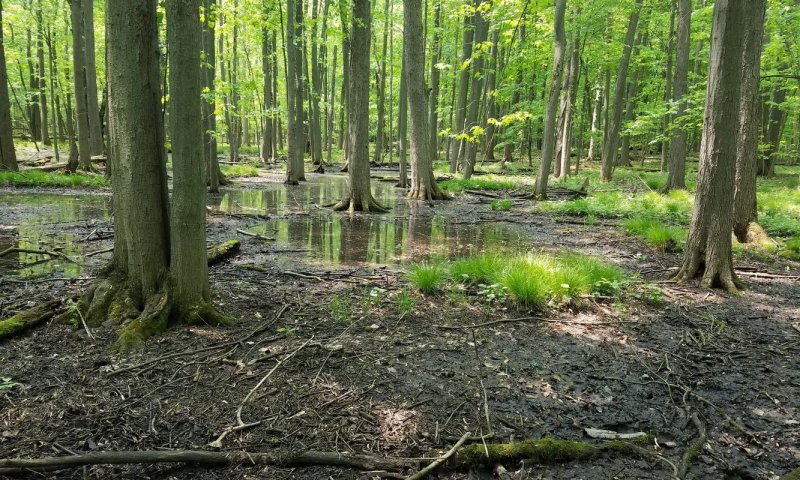
The Reference State consists of swamp forests, wet meadows, shrub swamps, and marshes
Dominant plant species
-
silver maple (Acer saccharinum), tree
-
green ash (Fraxinus pennsylvanica), tree
-
sensitive fern (Onoclea sensibilis), other herbaceous
Community 1.1
Swamp Forest

Figure 8. Swamp forest, Ottawa County, Michigan.
Dominant plant species
-
silver maple (Acer saccharinum), tree
-
green ash (Fraxinus pennsylvanica), tree
-
fowl mannagrass (Glyceria striata), grass
Table 5. Canopy structure (% cover)
| Height Above Ground (m) | Tree | Shrub/Vine | Grass/ Grasslike |
Forb |
|---|---|---|---|---|
| <0.15 | – | 0-1% | 0% | 0-4% |
| >0.15 <= 0.3 | 0-1% | 0-8% | 2-30% | 3-19% |
| >0.3 <= 0.6 | 0-1% | 0-7% | 1-30% | 2-13% |
| >0.6 <= 1.4 | – | 0-1% | – | – |
| >1.4 <= 4 | 0-12% | 0-6% | – | – |
| >4 <= 12 | 56-91% | 0-2% | – | – |
| >12 <= 24 | 66-91% | – | – | – |
| >24 <= 37 | 46-91% | – | – | – |
| >37 | – | – | – | – |
Community 1.2
Wet Meadow
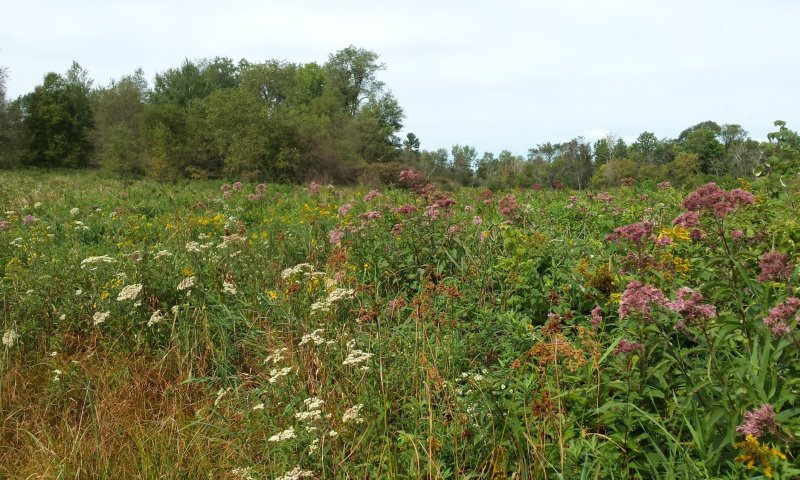
Figure 9. Unspecified wet meadow showing representative structure.
Dominant plant species
-
rice cutgrass (Leersia oryzoides), grass
-
sweet woodreed (Cinna arundinacea), grass
Table 6. Canopy structure (% cover)
| Height Above Ground (m) | Tree | Shrub/Vine | Grass/ Grasslike |
Forb |
|---|---|---|---|---|
| <0.15 | – | 0-1% | 32-75% | 16-48% |
| >0.15 <= 0.3 | – | 0-1% | 32-75% | 16-48% |
| >0.3 <= 0.6 | 16-48% | 1-4% | – | – |
| >0.6 <= 1.4 | 18-53% | 1-4% | – | – |
| >1.4 <= 4 | 5-15% | 0% | – | – |
| >4 <= 12 | 5-15% | – | – | – |
| >12 <= 24 | – | – | – | – |
| >24 <= 37 | – | – | – | – |
| >37 | – | – | – | – |
Community 1.3
Shrub-Thicket
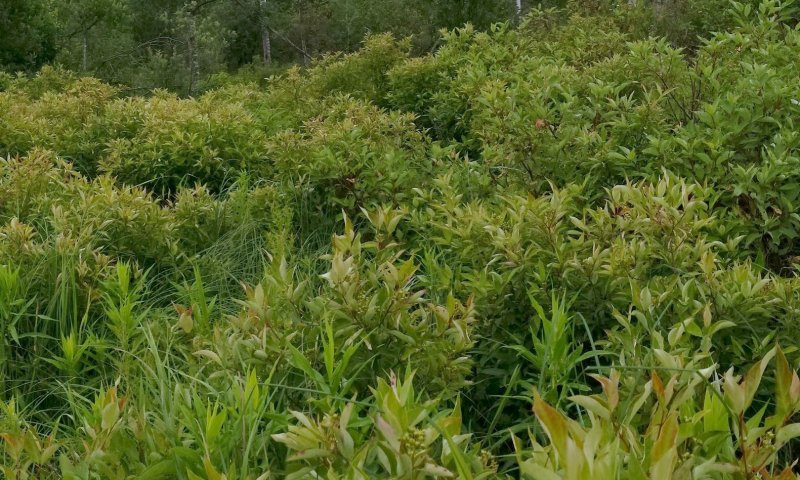
Figure 10. Unspecified shrub thicket showing representative structure.
Dominant plant species
-
silky dogwood (Cornus obliqua), shrub
-
willow (Salix), shrub
Community 1.4
Emergent Marsh
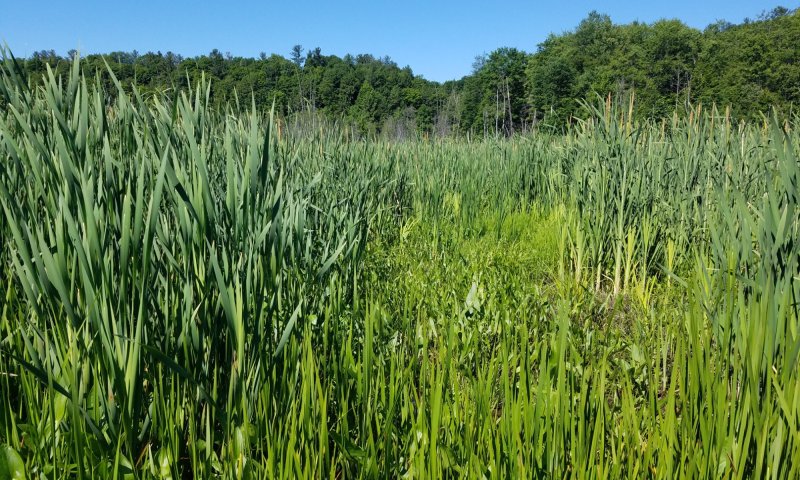
Figure 11. Unspecified emergent marsh showing representative structure.
Dominant plant species
-
broadleaf cattail (Typha latifolia), grass
Community 1.5
Inundated Shrub Swamp
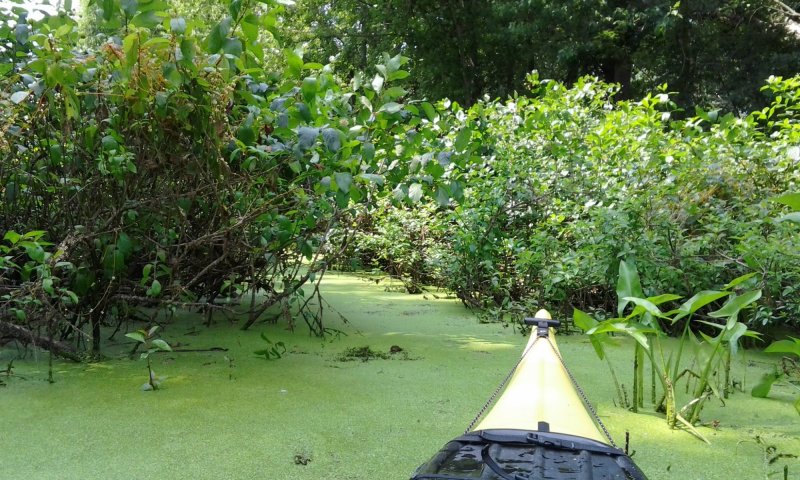
Figure 12. Unspecified inundated shrub swamp showing representative structure.
Dominant plant species
-
common buttonbush (Cephalanthus occidentalis), shrub
Table 7. Canopy structure (% cover)
| Height Above Ground (m) | Tree | Shrub/Vine | Grass/ Grasslike |
Forb |
|---|---|---|---|---|
| <0.15 | – | – | – | 5-5% |
| >0.15 <= 0.3 | – | – | 2-2% | 5-5% |
| >0.3 <= 0.6 | – | – | 2-2% | – |
| >0.6 <= 1.4 | – | 95-95% | – | – |
| >1.4 <= 4 | – | 95-95% | – | – |
| >4 <= 12 | – | – | – | – |
| >12 <= 24 | – | – | – | – |
| >24 <= 37 | – | – | – | – |
| >37 | – | – | – | – |
Pathway 1.1A
Community 1.1 to 1.2


Temporary prolonged inundation.
Pathway 1.1B
Community 1.1 to 1.3


Clearcut/Blowdown.
Conservation practices
| Early Successional Habitat Development/Management | |
|---|---|
| Forest Stand Improvement |
Pathway 1.2A
Community 1.2 to 1.1


Succession.
Conservation practices
| Tree/Shrub Site Preparation | |
|---|---|
| Tree/Shrub Establishment |
Pathway 1.2B
Community 1.2 to 1.3


Succession.
Conservation practices
| Tree/Shrub Site Preparation | |
|---|---|
| Tree/Shrub Establishment |
Pathway 1.2D
Community 1.2 to 1.4


Permanent inundation.
Pathway 1.2E
Community 1.2 to 1.5


Shrub establishment; permanent inundation.
Conservation practices
| Tree/Shrub Establishment |
|---|
Pathway 1.3A
Community 1.3 to 1.1


Succession.
Conservation practices
| Tree/Shrub Site Preparation | |
|---|---|
| Tree/Shrub Establishment |
Pathway 1.3B
Community 1.3 to 1.2


Temporary prolonged inundation.
Pathway 1.3C
Community 1.3 to 1.4


Permanent inundation.
Pathway 1.3C
Community 1.3 to 1.5


Permanent inundation.
Pathway 1.4A
Community 1.4 to 1.2


Drop water table.
Pathway 1.4C
Community 1.4 to 1.5


Temporary drop water table; shrub establishment.
Pathway 1.5A
Community 1.5 to 1.2


Drop water table; shrub mortality.
Conservation practices
| Brush Management |
|---|
Pathway 1.5C
Community 1.5 to 1.4


Temporary drought; shrub mortality.
State 2
Cultural State
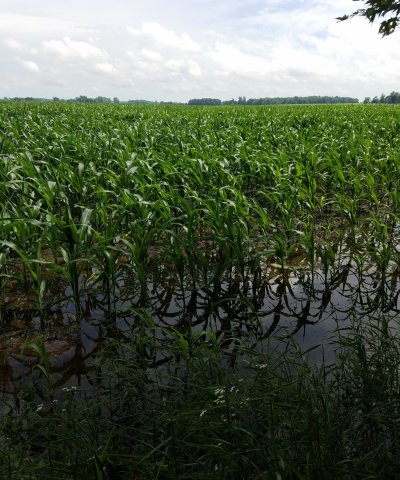
[Alternative States to be developed; refer to component communities.]
Community 2.1
Sustainable Crop, Pasture, or Plantation
Community 2.2
Unsustainable Cultural Phase
Dominant plant species
-
corn (Zea mays), grass
-
soybean (Glycine max), grass
Community 2.3
Conservation Feature
Can be a grassed waterway, conservation reserve, a small patch pollinator garden, or other land taken out of its primary cultural production to mitigate or reduce impacts of adjacent land use, and is not by itself a permanent restoration of a complete native biological community and associated ecosystem services.
Pathway 2.1A
Community 2.1 to 2.2
Revert to unsustainable cultural practices.
Pathway 2.1B
Community 2.1 to 2.3
Establish conservation feature.
Conservation practices
| Conservation Cover | |
|---|---|
| Grassed Waterway |
Pathway 2.2A
Community 2.2 to 2.1
Implement sustainable cultural practices.
Conservation practices
| Conservation Crop Rotation | |
|---|---|
| Cover Crop | |
| Nutrient Management | |
| Integrated Pest Management (IPM) |
Pathway 2.2B
Community 2.2 to 2.3
Establish conservation feature.
Conservation practices
| Conservation Cover | |
|---|---|
| Grassed Waterway |
Pathway 2.3A
Community 2.3 to 2.1
Implement sustainable cultural practices.
Conservation practices
| Conservation Crop Rotation | |
|---|---|
| Cover Crop | |
| Nutrient Management | |
| Integrated Pest Management (IPM) |
Pathway 2.3B
Community 2.3 to 2.2
Revert to unsustainable cultural practices.
State 3
Seminatural Drained State
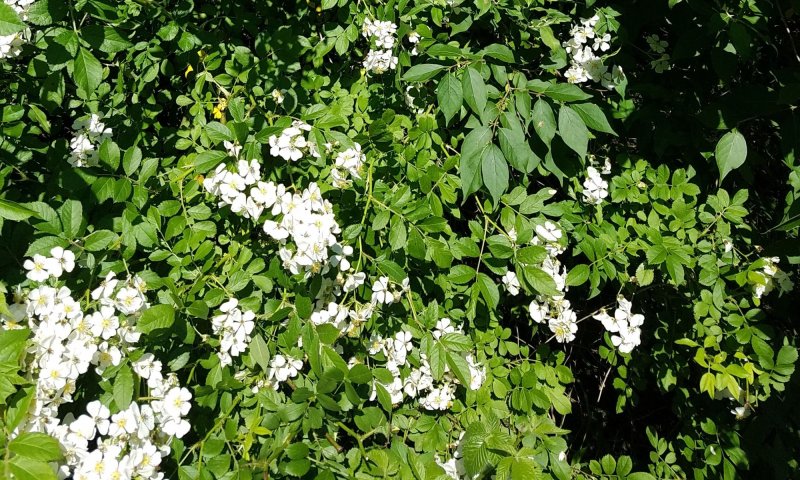
[Alternative States to be developed; refer to component communities.]
Community 3.1
Ruderal Drained Meadow & Shrub
Dominant plant species
-
timothy (Phleum pratense), grass
-
tall fescue (Schedonorus arundinaceus), grass
Table 8. Canopy structure (% cover)
| Height Above Ground (m) | Tree | Shrub/Vine | Grass/ Grasslike |
Forb |
|---|---|---|---|---|
| <0.15 | – | – | 0% | 0% |
| >0.15 <= 0.3 | 0% | – | 69-96% | 24-73% |
| >0.3 <= 0.6 | 0% | – | 69-96% | 24-73% |
| >0.6 <= 1.4 | 0-1% | – | – | – |
| >1.4 <= 4 | 0-1% | – | – | – |
| >4 <= 12 | – | – | – | – |
| >12 <= 24 | – | – | – | – |
| >24 <= 37 | – | – | – | – |
| >37 | – | – | – | – |
Community 3.2
Exotic Ruderal Drained Forest
Dominant plant species
-
silver maple (Acer saccharinum), tree
-
multiflora rose (Rosa multiflora), shrub
Table 9. Canopy structure (% cover)
| Height Above Ground (m) | Tree | Shrub/Vine | Grass/ Grasslike |
Forb |
|---|---|---|---|---|
| <0.15 | – | 0-3% | – | 0-6% |
| >0.15 <= 0.3 | 0-1% | 0-14% | 4-42% | 1-29% |
| >0.3 <= 0.6 | 0-1% | 0-5% | 4-42% | 1-20% |
| >0.6 <= 1.4 | – | 0-8% | – | – |
| >1.4 <= 4 | 0-17% | 11-49% | – | – |
| >4 <= 12 | 70-84% | 11-22% | – | – |
| >12 <= 24 | 60-75% | – | – | – |
| >24 <= 37 | 0-21% | – | – | – |
| >37 | – | – | – | – |
Pathway 3.1A
Community 3.1 to 3.2
Succession
Pathway 3.2A
Community 3.2 to 3.1
Blowdown/clearcut.
Conservation practices
| Early Successional Habitat Development/Management | |
|---|---|
| Forest Stand Improvement |
State 4
Seminatural State
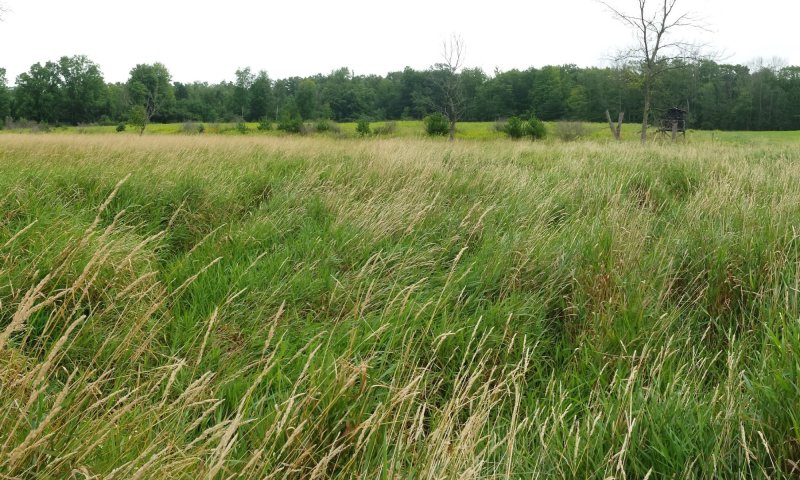
[Alternative States to be developed; refer to component communities.]
Community 4.1
Ruderal Wet Meadow & Shrub Swamp
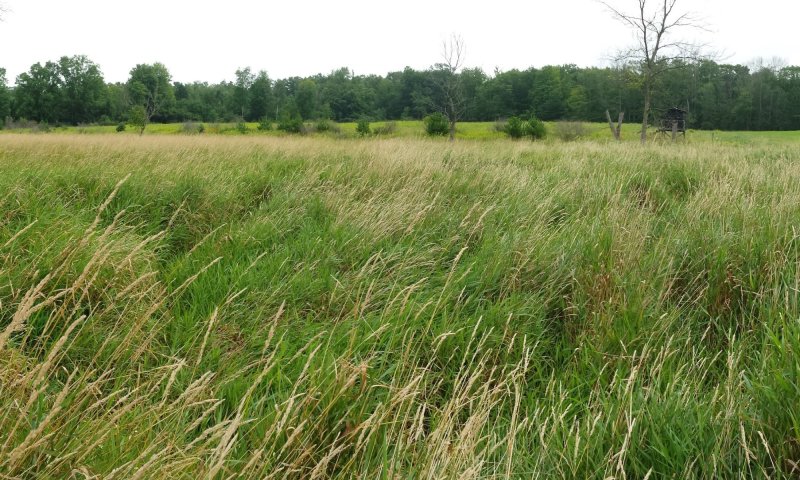
Figure 13. Representative reed canary grass wet meadow.
Dominant plant species
-
reed canarygrass (Phalaris arundinacea), grass
Table 10. Canopy structure (% cover)
| Height Above Ground (m) | Tree | Shrub/Vine | Grass/ Grasslike |
Forb |
|---|---|---|---|---|
| <0.15 | – | 0-1% | – | – |
| >0.15 <= 0.3 | 0% | 0-2% | 2-91% | 2-48% |
| >0.3 <= 0.6 | 0% | 0-1% | 77-97% | 12-65% |
| >0.6 <= 1.4 | – | 0-1% | 0-15% | 0-5% |
| >1.4 <= 4 | 0-4% | 0-13% | – | – |
| >4 <= 12 | 0-10% | 0-1% | – | – |
| >12 <= 24 | – | – | – | – |
| >24 <= 37 | – | – | – | – |
| >37 | – | – | – | – |
Community 4.2
Exotic Ruderal Swamp Forest
Table 11. Canopy structure (% cover)
| Height Above Ground (m) | Tree | Shrub/Vine | Grass/ Grasslike |
Forb |
|---|---|---|---|---|
| <0.15 | – | 13-13% | – | 1-1% |
| >0.15 <= 0.3 | 25-25% | 34-34% | – | 60-60% |
| >0.3 <= 0.6 | 25-25% | 24-24% | – | 60-60% |
| >0.6 <= 1.4 | – | 16-16% | – | – |
| >1.4 <= 4 | 13-13% | 20-20% | – | – |
| >4 <= 12 | 96-96% | 4-4% | – | – |
| >12 <= 24 | 96-96% | – | – | – |
| >24 <= 37 | – | – | – | – |
| >37 | – | – | – | – |
Pathway 4.1A
Community 4.1 to 4.2
Succession.
Pathway 4.2A
Community 4.2 to 4.1
Blowdown/clearcut.
Conservation practices
| Early Successional Habitat Development/Management | |
|---|---|
| Forest Stand Improvement |
State 5
Native Drained State
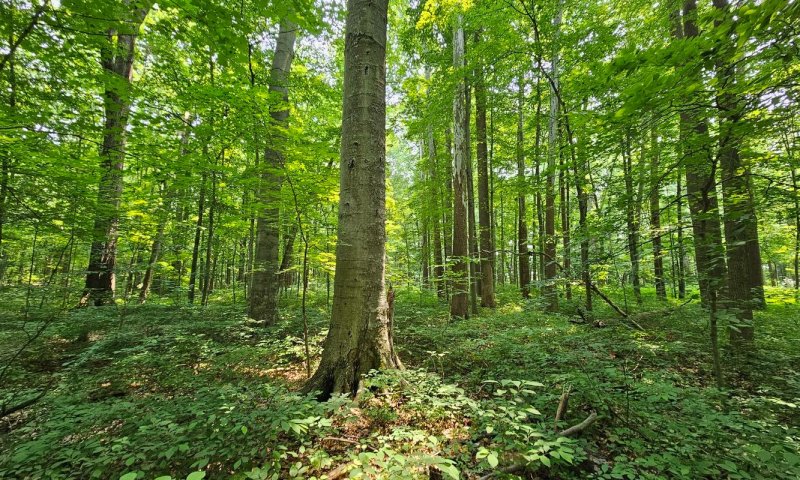
Community 5.1
Native Drained Forest
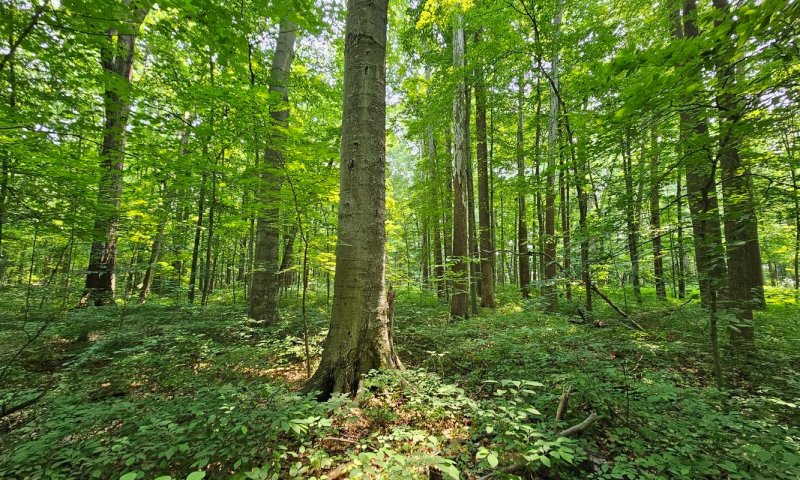
Dominant plant species
-
sugar maple (Acer saccharum), tree
-
American beech (Fagus grandifolia), tree
Table 12. Canopy structure (% cover)
| Height Above Ground (m) | Tree | Shrub/Vine | Grass/ Grasslike |
Forb |
|---|---|---|---|---|
| <0.15 | – | 0-2% | 0-2% | 0-5% |
| >0.15 <= 0.3 | 0-1% | 0-6% | 0-3% | 2-17% |
| >0.3 <= 0.6 | 0-1% | 0-5% | 0-2% | 1-12% |
| >0.6 <= 1.4 | – | 0-5% | – | – |
| >1.4 <= 4 | 2-18% | 0-10% | – | – |
| >4 <= 12 | 39-95% | 0-2% | – | – |
| >12 <= 24 | 73-95% | – | – | – |
| >24 <= 37 | 56-81% | – | – | – |
| >37 | – | – | – | – |
Transition T1A
State 1 to 2


Drain; clear vegetation; cultivate domesticated species.
Transition T1B
State 1 to 3


Drain; clear vegetation, invasive species introduced.
Transition T1C
State 1 to 4


Clear vegetation, invasive species introduced.
Transition T1D
State 1 to 5


Drain.
Restoration pathway R2
State 2 to 1


Restore hydrology; remove domesticated species; restore native species.
Conservation practices
| Brush Management | |
|---|---|
| Restoration and Management of Rare and Declining Habitats | |
| Wetland Wildlife Habitat Management | |
| Wetland Restoration | |
| Herbaceous Weed Control |
Transition T2A
State 2 to 3


Abandon, succession.
Transition T2B
State 2 to 4


Restore hydrology; abandon; succession.
Conservation practices
| Wetland Restoration |
|---|
Restoration pathway R3A
State 3 to 1


Restore hydrology; control invasive species; restore native species
Conservation practices
| Brush Management | |
|---|---|
| Restoration and Management of Rare and Declining Habitats | |
| Wetland Wildlife Habitat Management | |
| Wetland Restoration | |
| Herbaceous Weed Control |
Transition T3A
State 3 to 2


Clear vegetation; cultivate domesticated species.
Restoration pathway R3B
State 3 to 4


Restore hydrology; remove invasive species.
Conservation practices
| Wetland Restoration |
|---|
Restoration pathway R4
State 4 to 1


Control invasive species; restore native species.
Conservation practices
| Brush Management | |
|---|---|
| Restoration and Management of Rare and Declining Habitats | |
| Wetland Wildlife Habitat Management | |
| Herbaceous Weed Control |
Transition T4A
State 4 to 2


Drain; clear vegetation; cultivate domesticated species.
Transition T4B
State 4 to 3


Drain.
Restoration pathway R5
State 5 to 1


Restore hydrology
Conservation practices
| Wetland Restoration |
|---|
Additional community tables
Table 13. Community 1.1 forest overstory composition
| Common name | Symbol | Scientific name | Nativity | Height (m) | Canopy cover (%) | Diameter (cm) | Basal area (square m/hectare) |
|---|---|---|---|---|---|---|---|
|
Tree
|
|||||||
| silver maple | ACSA2 | Acer saccharinum | Native | 11.7–24.7 | 33.7–70.2 | 23.9–53.1 | – |
| green ash | FRPE | Fraxinus pennsylvanica | Native | 12.9–26.6 | 0–21.7 | – | – |
| American elm | ULAM | Ulmus americana | Native | 6.8–13.6 | 0–8.8 | 7.1–20.1 | – |
| swamp white oak | QUBI | Quercus bicolor | Native | 12.5–27.3 | 0–6.6 | 45–80 | – |
| bur oak | QUMA2 | Quercus macrocarpa | Native | 11.6–25 | 0–6 | 38.1–68.1 | – |
| eastern cottonwood | PODE3 | Populus deltoides | Native | 17.9–28.1 | 0–6 | 47–72.9 | – |
| American beech | FAGR | Fagus grandifolia | Native | 12–25 | 0–4.8 | – | – |
| American elm | ULAM | Ulmus americana | Native | 11.7–24.6 | 0–4.6 | 21.1 | – |
| red maple | ACRU | Acer rubrum | Native | 12–25 | 0–4.3 | – | – |
| red maple | ACRU | Acer rubrum | Native | 7.5–15 | 0–3.5 | – | – |
| American basswood | TIAM | Tilia americana | Native | 11.9–24.8 | 0–3.5 | – | – |
| black cherry | PRSE2 | Prunus serotina | Native | 12–25 | 0–2.1 | – | – |
| bitternut hickory | CACO15 | Carya cordiformis | Native | 12–25 | 0–1.9 | – | – |
| black maple | ACNI5 | Acer nigrum | Native | 7.5–15 | 0–1.9 | – | – |
| American sycamore | PLOC | Platanus occidentalis | Native | 12–25 | 0–1.8 | – | – |
| silver maple | ACSA2 | Acer saccharinum | Native | 7.5–15 | 0–1.6 | – | – |
| American basswood | TIAM | Tilia americana | Native | 7.1–13.8 | 0–1.5 | – | – |
| shagbark hickory | CAOV2 | Carya ovata | Native | 12.1–25 | 0–1.5 | – | – |
| northern red oak | QURU | Quercus rubra | Native | 12.9–27.6 | 0–1.5 | 52.1 | – |
| sugar maple | ACSA3 | Acer saccharum | Native | 10.8–22.8 | 0–1.4 | – | – |
| American beech | FAGR | Fagus grandifolia | Native | 6.9–14.8 | 0–1.4 | – | – |
| green ash | FRPE | Fraxinus pennsylvanica | Native | 6–12 | 0–1.4 | – | – |
| American hornbeam | CACA18 | Carpinus caroliniana | Native | 7.4–14.9 | 0–1.2 | – | – |
| shagbark hickory | CAOV2 | Carya ovata | Native | 6.9–13.8 | 0–0.8 | – | – |
| sugar maple | ACSA3 | Acer saccharum | Native | 7.5–14.9 | 0–0.7 | – | – |
| bur oak | QUMA2 | Quercus macrocarpa | Native | 7.5–15 | 0–0.6 | – | – |
| hophornbeam | OSVI | Ostrya virginiana | Native | 2–9.2 | 0–0.2 | – | – |
| bitternut hickory | CACO15 | Carya cordiformis | Native | 7.5–15 | 0–0.1 | – | – |
| black cherry | PRSE2 | Prunus serotina | Native | 3–6 | 0–0.1 | – | – |
|
Vine/Liana
|
|||||||
| eastern poison ivy | TORA2 | Toxicodendron radicans | Native | 5–10 | 0–0.3 | – | – |
Table 14. Community 1.1 forest understory composition
| Common name | Symbol | Scientific name | Nativity | Height (m) | Canopy cover (%) | |
|---|---|---|---|---|---|---|
|
Grass/grass-like (Graminoids)
|
||||||
| fowl mannagrass | GLST | Glyceria striata | Native | 0.2–0.5 | 0–10.7 | |
| sedge | CAREX | Carex | Native | 0.2–0.5 | 0–7.9 | |
| sweet woodreed | CIAR2 | Cinna arundinacea | Native | 0.2–0.6 | 0–7 | |
| Gray's sedge | CAGR5 | Carex grayi | Native | 0.2–0.5 | 0–6.6 | |
| reed canarygrass | PHAR3 | Phalaris arundinacea | Native | 0.2–0.5 | 0–5.7 | |
| whitegrass | LEVI2 | Leersia virginica | Native | 0.2–0.5 | 0–5.7 | |
| brome-like sedge | CABR14 | Carex bromoides | Native | 0.1–0.3 | 0–2.7 | |
| Virginia wildrye | ELVI3 | Elymus virginicus | Native | 0.2–0.5 | 0–1.7 | |
| hop sedge | CALU4 | Carex lupulina | Native | 0.2–0.5 | 0–0.8 | |
| false hop sedge | CALU3 | Carex lupuliformis | Native | 0.2–0.5 | 0–0.5 | |
| Tuckerman's sedge | CATU2 | Carex tuckermanii | Native | 0.2–0.5 | 0–0.5 | |
| eastern bottlebrush grass | ELHY | Elymus hystrix | Native | 0.2–0.5 | 0–0.4 | |
| greater bladder sedge | CAIN12 | Carex intumescens | Native | 0.2–0.5 | 0–0.3 | |
| fox sedge | CAVU2 | Carex vulpinoidea | Native | 0.2–0.5 | 0–0.2 | |
| eastern woodland sedge | CABL | Carex blanda | Native | 0.1–0.2 | 0–0.1 | |
|
Forb/Herb
|
||||||
| smallspike false nettle | BOCY | Boehmeria cylindrica | Native | 0.2–0.5 | 0–6.4 | |
| jumpseed | POVI2 | Polygonum virginianum | Native | 0.2–0.5 | 0–5.4 | |
| Canadian woodnettle | LACA3 | Laportea canadensis | Native | 0.2–0.5 | 0–4.3 | |
| Canadian clearweed | PIPU2 | Pilea pumila | Native | 0.1–0.3 | 0–3.5 | |
| American pokeweed | PHAM4 | Phytolacca americana | Native | 0.2–0.5 | 0–2 | |
| devil's beggartick | BIFR | Bidens frondosa | Native | 0.2–0.5 | 0–1.9 | |
| giant goldenrod | SOGI | Solidago gigantea | Native | 0.2–0.5 | 0–1.4 | |
| bottomland aster | SYON2 | Symphyotrichum ontarionis | Native | 0.2–0.5 | 0–1.1 | |
| threelobe beggarticks | BITR | Bidens tripartita | Native | 0.2–0.5 | 0–0.6 | |
| white panicle aster | SYLA6 | Symphyotrichum lanceolatum | Native | 0.2–0.5 | 0–0.5 | |
| white avens | GECA7 | Geum canadense | Native | 0.2–0.5 | 0–0.4 | |
| Virginia iris | IRVI | Iris virginica | Native | 0.2–0.5 | 0–0.4 | |
| common threeseed mercury | ACRH | Acalypha rhomboidea | Native | 0–0.1 | 0–0.4 | |
| jewelweed | IMCA | Impatiens capensis | Native | 0.2–0.5 | 0–0.3 | |
| enchanter's nightshade | CIIN4 | Circaea ×intermedia | Native | 0.1–0.3 | 0–0.3 | |
| blue skullcap | SCLA2 | Scutellaria lateriflora | Native | 0.2–0.5 | 0–0.2 | |
| common blue violet | VISO | Viola sororia | Native | 0–0.1 | 0–0.2 | |
| Jack in the pulpit | ARTR | Arisaema triphyllum | Native | 0.1–0.3 | 0–0.2 | |
| yellow marsh marigold | CAPA5 | Caltha palustris | Native | 0.2–0.4 | 0–0.1 | |
| Canada mayflower | MACA4 | Maianthemum canadense | Native | 0–0.1 | 0–0.1 | |
| fringed loosestrife | LYCI | Lysimachia ciliata | Native | 0.2–0.5 | 0–0.1 | |
|
Fern/fern ally
|
||||||
| spinulose woodfern | DRCA11 | Dryopteris carthusiana | Native | 0.2–0.5 | 0–1.1 | |
| sensitive fern | ONSE | Onoclea sensibilis | Native | 0.2–0.4 | 0–0.5 | |
| intermediate woodfern | DRIN5 | Dryopteris intermedia | Native | 0.1–0.3 | 0–0.2 | |
|
Shrub/Subshrub
|
||||||
| common buttonbush | CEOC2 | Cephalanthus occidentalis | Native | 2.5–5 | 0–11.9 | |
| northern spicebush | LIBE3 | Lindera benzoin | Native | 1.8–3.6 | 0–9.9 | |
| common pricklyash | ZAAM | Zanthoxylum americanum | Native | 2.3–4.6 | 0–2.5 | |
| Allegheny blackberry | RUAL | Rubus allegheniensis | Native | 0.5–0.9 | 0–0.9 | |
| black raspberry | RUOC | Rubus occidentalis | Native | 0.5–0.9 | 0–0.8 | |
| black raspberry | RUOC | Rubus occidentalis | Native | 0.2–0.5 | 0–0.5 | |
| common winterberry | ILVE | Ilex verticillata | Native | 1.8–3.5 | 0–0.3 | |
| Allegheny blackberry | RUAL | Rubus allegheniensis | Native | 0.2–0.5 | 0–0.2 | |
| currant | RIBES | Ribes | Native | 0.2–0.5 | 0–0.2 | |
| northern spicebush | LIBE3 | Lindera benzoin | Native | 0.2–0.5 | 0–0.2 | |
| gray dogwood | CORA6 | Cornus racemosa | Native | 0.2–0.5 | 0–0.1 | |
|
Tree
|
||||||
| green ash | FRPE | Fraxinus pennsylvanica | Native | 2.5–5 | 0–4.4 | |
| American elm | ULAM | Ulmus americana | Native | 2.5–5 | 0–2.6 | |
| American hornbeam | CACA18 | Carpinus caroliniana | Native | 2.5–5 | 0–2.2 | |
| silver maple | ACSA2 | Acer saccharinum | Native | 0.2–0.5 | 0–0.6 | |
| green ash | FRPE | Fraxinus pennsylvanica | Native | 0.2–0.5 | 0–0.6 | |
| bitternut hickory | CACO15 | Carya cordiformis | Native | 2.5–5 | 0–0.6 | |
| American beech | FAGR | Fagus grandifolia | Native | 2.5–5 | 0–0.4 | |
| shagbark hickory | CAOV2 | Carya ovata | Native | 2.5–5 | 0–0.3 | |
| sugar maple | ACSA3 | Acer saccharum | Native | 0.2–0.5 | 0–0.3 | |
| shagbark hickory | CAOV2 | Carya ovata | Native | 0.2–0.5 | 0–0.2 | |
| hawthorn | CRATA | Crataegus | Native | 2.5–5 | 0–0.2 | |
| American elm | ULAM | Ulmus americana | Native | 0.2–0.5 | 0–0.1 | |
| bur oak | QUMA2 | Quercus macrocarpa | Native | 0.2–0.5 | 0–0.1 | |
| American beech | FAGR | Fagus grandifolia | Native | 0.2–0.5 | 0–0.1 | |
|
Vine/Liana
|
||||||
| eastern poison ivy | TORA2 | Toxicodendron radicans | Native | 0.2–0.5 | 0–6.1 | |
| American hogpeanut | AMBR2 | Amphicarpaea bracteata | Native | 0.2–0.5 | 0–3.5 | |
| riverbank grape | VIRI | Vitis riparia | Native | 2.5–5 | 0–1.2 | |
| Virginia creeper | PAQU2 | Parthenocissus quinquefolia | Native | 0.1–0.3 | 0–0.9 | |
| eastern poison ivy | TORA2 | Toxicodendron radicans | Native | 2.5–5 | 0–0.8 | |
| riverbank grape | VIRI | Vitis riparia | Native | 0.2–0.5 | 0–0.7 | |
| Virginia creeper | PAQU2 | Parthenocissus quinquefolia | Native | 0.5–0.9 | 0–0.1 | |
|
Nonvascular
|
||||||
| Moss | 2MOSS | Moss | Native | – | 0–1.9 | |
Table 15. Community 1.2 forest overstory composition
| Common name | Symbol | Scientific name | Nativity | Height (m) | Canopy cover (%) | Diameter (cm) | Basal area (square m/hectare) |
|---|---|---|---|---|---|---|---|
|
Tree
|
|||||||
| eastern cottonwood | PODE3 | Populus deltoides | Native | 12–25 | 10 | – | – |
|
Vine/Liana
|
|||||||
| riverbank grape | VIRI | Vitis riparia | Native | 7.5–15 | 0.1 | – | – |
Table 16. Community 1.2 forest understory composition
| Common name | Symbol | Scientific name | Nativity | Height (m) | Canopy cover (%) | |
|---|---|---|---|---|---|---|
|
Grass/grass-like (Graminoids)
|
||||||
| rice cutgrass | LEOR | Leersia oryzoides | Native | 0.2–0.5 | 46.5 | |
| sweet woodreed | CIAR2 | Cinna arundinacea | Native | 0.2–0.5 | 24.5 | |
| reed canarygrass | PHAR3 | Phalaris arundinacea | Native | 0.2–0.5 | 7 | |
| fowl mannagrass | GLST | Glyceria striata | Native | 0.2–0.5 | 5.5 | |
| hairy sedge | CALA16 | Carex lacustris | Native | 0.2–0.5 | 2.5 | |
| sedge | CAREX | Carex | Native | 0.2–0.5 | 1.5 | |
| hop sedge | CALU4 | Carex lupulina | Native | 0.2–0.5 | 1.5 | |
|
Forb/Herb
|
||||||
| jewelweed | IMCA | Impatiens capensis | Native | 0.2–0.5 | 13 | |
| bottomland aster | SYON2 | Symphyotrichum ontarionis | Native | 0.2–0.5 | 13 | |
| devil's beggartick | BIFR | Bidens frondosa | Native | 0.2–0.5 | 7 | |
| smallspike false nettle | BOCY | Boehmeria cylindrica | Native | 0.2–0.5 | 3 | |
| purpleleaf willowherb | EPCO | Epilobium coloratum | Native | 0.2–0.5 | 3 | |
| giant goldenrod | SOGI | Solidago gigantea | Native | 0.2–0.5 | 3 | |
| ditch stonecrop | PESE6 | Penthorum sedoides | Native | 0.2–0.5 | 1.5 | |
| white vervain | VEUR | Verbena urticifolia | Native | 0.2–0.5 | 1.5 | |
| jumpseed | POVI2 | Polygonum virginianum | Native | 0.2–0.5 | 0.1 | |
| white avens | GECA7 | Geum canadense | Native | 0.2–0.5 | 0.1 | |
|
Shrub/Subshrub
|
||||||
| common pricklyash | ZAAM | Zanthoxylum americanum | Native | 2.5–5 | 2.5 | |
|
Tree
|
||||||
| green ash | FRPE | Fraxinus pennsylvanica | Native | 2.5–5 | 32 | |
|
Vine/Liana
|
||||||
| riverbank grape | VIRI | Vitis riparia | Native | 0.2–0.5 | 0.5 | |
| eastern poison ivy | TORA2 | Toxicodendron radicans | Native | 0.2–0.5 | 0.1 | |
Table 17. Community 1.5 forest understory composition
| Common name | Symbol | Scientific name | Nativity | Height (m) | Canopy cover (%) | |
|---|---|---|---|---|---|---|
|
Grass/grass-like (Graminoids)
|
||||||
| fowl mannagrass | GLST | Glyceria striata | Native | 0.2–0.5 | 1 | |
| whitegrass | LEVI2 | Leersia virginica | Native | 0.2–0.5 | 1 | |
|
Forb/Herb
|
||||||
| Canadian clearweed | PIPU2 | Pilea pumila | Native | 0.1–0.3 | 5 | |
|
Shrub/Subshrub
|
||||||
| common buttonbush | CEOC2 | Cephalanthus occidentalis | Native | 2.5–5 | 95 | |
Table 18. Community 3.1 forest understory composition
| Common name | Symbol | Scientific name | Nativity | Height (m) | Canopy cover (%) | |
|---|---|---|---|---|---|---|
|
Grass/grass-like (Graminoids)
|
||||||
| timothy | PHPR3 | Phleum pratense | Introduced | 0.2–0.5 | 6–64 | |
| tall fescue | SCAR7 | Schedonorus arundinaceus | Introduced | 0.2–0.5 | 0–48.9 | |
| fowl bluegrass | POPA2 | Poa palustris | Native | 0.2–0.5 | 0–38.7 | |
| reed canarygrass | PHAR3 | Phalaris arundinacea | Native | 0.2–0.5 | 0–21.1 | |
| quackgrass | ELRE4 | Elymus repens | Introduced | 0.2–0.5 | 0–12 | |
| smooth brome | BRIN2 | Bromus inermis | Introduced | 0.2–0.5 | 0–1.7 | |
| barnyardgrass | ECCR | Echinochloa crus-galli | Introduced | 0.2–0.5 | 0–0.5 | |
| perennial ryegrass | LOPE | Lolium perenne | Introduced | 0.2–0.5 | 0–0.5 | |
| yellow nutsedge | CYES | Cyperus esculentus | Native | 0.1–0.2 | 0–0.5 | |
|
Forb/Herb
|
||||||
| Canada thistle | CIAR4 | Cirsium arvense | Introduced | 0.2–0.5 | 0–37.9 | |
| Indianhemp | APCA | Apocynum cannabinum | Native | 0.2–0.5 | 0–16.8 | |
| Canada goldenrod | SOAL6 | Solidago altissima | Native | 0.2–0.5 | 0–16.8 | |
| Queen Anne's lace | DACA6 | Daucus carota | Introduced | 0.2–0.5 | 0–11.5 | |
| Pennsylvania smartweed | POPE2 | Polygonum pensylvanicum | Native | 0.2–0.5 | 0–5.3 | |
| redroot amaranth | AMRE | Amaranthus retroflexus | Introduced | 0.2–0.5 | 0–2.6 | |
| bladder campion | SILA21 | Silene latifolia | Introduced | 0.2–0.5 | 0–2.6 | |
| annual ragweed | AMAR2 | Ambrosia artemisiifolia | Native | 0.2–0.5 | 2.6 | |
| garden yellowrocket | BAVU | Barbarea vulgaris | Introduced | 0.2–0.5 | 0–1.1 | |
| prairie fleabane | ERST3 | Erigeron strigosus | Native | 0.2–0.5 | 0–1.1 | |
| marshpepper knotweed | POHY | Polygonum hydropiper | Introduced | 0.2–0.5 | 0–1.1 | |
| curly dock | RUCR | Rumex crispus | Introduced | 0.2–0.5 | 0–1.1 | |
| Canada goldenrod | SOCA6 | Solidago canadensis | Native | 0.2–0.5 | 0–1.1 | |
| Fuller's teasel | DIFU2 | Dipsacus fullonum | Introduced | 0.2–0.5 | 0–0.8 | |
| hairy white oldfield aster | SYPI2 | Symphyotrichum pilosum | Native | 0.2–0.5 | 0–0.8 | |
| velvetleaf | ABTH | Abutilon theophrasti | Introduced | 0.2–0.5 | 0–0.5 | |
| chicory | CIIN | Cichorium intybus | Introduced | 0.2–0.5 | 0–0.5 | |
| bull thistle | CIVU | Cirsium vulgare | Introduced | 0.2–0.5 | 0–0.5 | |
| flat-top goldentop | EUGR5 | Euthamia graminifolia | Native | 0.2–0.5 | 0–0.5 | |
| field pepperweed | LECA5 | Lepidium campestre | Introduced | 0.2–0.5 | 0–0.5 | |
| Norwegian cinquefoil | PONO3 | Potentilla norvegica | Native | 0.2–0.5 | 0–0.5 | |
| spiny sowthistle | SOAS | Sonchus asper | Introduced | 0.2–0.5 | 0–0.5 | |
| lambsquarters | CHAL7 | Chenopodium album | Native | 0.1–0.3 | 0–0.5 | |
| lesser burdock | ARMI2 | Arctium minus | Introduced | 0.2–0.5 | 0.5 | |
|
Tree
|
||||||
| green ash | FRPE | Fraxinus pennsylvanica | Native | 2.5–5 | 0–1.7 | |
| eastern cottonwood | PODE3 | Populus deltoides | Native | 0.2–0.5 | 0–0.5 | |
Table 19. Community 3.2 forest overstory composition
| Common name | Symbol | Scientific name | Nativity | Height (m) | Canopy cover (%) | Diameter (cm) | Basal area (square m/hectare) |
|---|---|---|---|---|---|---|---|
|
Tree
|
|||||||
| silver maple | ACSA2 | Acer saccharinum | Native | 10–20.1 | 42.5–52.5 | 18–54.1 | – |
| green ash | FRPE | Fraxinus pennsylvanica | Native | 7.2–14.4 | 0–36 | – | – |
| American elm | ULAM | Ulmus americana | Native | 7.5–15 | 0–3.6 | – | – |
| eastern cottonwood | PODE3 | Populus deltoides | Native | 7.5–15 | 0–3.2 | – | – |
|
Vine/Liana
|
|||||||
| eastern poison ivy | TORA2 | Toxicodendron radicans | Native | 5–10 | 0–0.2 | – | – |
Table 20. Community 3.2 forest understory composition
| Common name | Symbol | Scientific name | Nativity | Height (m) | Canopy cover (%) | |
|---|---|---|---|---|---|---|
|
Grass/grass-like (Graminoids)
|
||||||
| fowl mannagrass | GLST | Glyceria striata | Native | 0.2–0.5 | 0–41.4 | |
| whitegrass | LEVI2 | Leersia virginica | Native | 0.2–0.5 | 0–41.4 | |
| tall fescue | SCAR7 | Schedonorus arundinaceus | Introduced | 0.2–0.5 | 0–10.7 | |
| graceful sedge | CAGR2 | Carex gracillima | Native | 0.2–0.5 | 0–8 | |
| rough bluegrass | POTR2 | Poa trivialis | Introduced | 0.2–0.5 | 0–8 | |
| reed canarygrass | PHAR3 | Phalaris arundinacea | Native | 0.2–0.5 | 0–3.6 | |
| green bulrush | SCAT2 | Scirpus atrovirens | Native | 0.2–0.5 | 0–1.4 | |
| fox sedge | CAVU2 | Carex vulpinoidea | Native | 0.2–0.5 | 0–0.2 | |
|
Forb/Herb
|
||||||
| beggarticks | BIDEN | Bidens | Native | 0.2–0.5 | 0–10.7 | |
| Canadian clearweed | PIPU2 | Pilea pumila | Native | 0.1–0.3 | 0–10.7 | |
| avens | GEUM | Geum | Native | 0.2–0.5 | 0–3.2 | |
| Canada goldenrod | SOAL6 | Solidago altissima | Native | 0.2–0.5 | 0–3.2 | |
| agrimony | AGRIM | Agrimonia | Native | 0.2–0.5 | 0–1.6 | |
| jumpseed | POVI2 | Polygonum virginianum | Native | 0.2–0.5 | 0–1.6 | |
| Philadelphia fleabane | ERPH | Erigeron philadelphicus | Native | 0.2–0.5 | 0–1.6 | |
| white panicle aster | SYLA6 | Symphyotrichum lanceolatum | Native | 0.2–0.5 | 0–1.6 | |
| Virginia strawberry | FRVI | Fragaria virginiana | Native | 0.1–0.2 | 0–1.6 | |
| spotted ladysthumb | POPE3 | Polygonum persicaria | Introduced | 0.2–0.5 | 0–1.4 | |
| common milkweed | ASSY | Asclepias syriaca | Native | 0.2–0.5 | 0–0.2 | |
| jewelweed | IMCA | Impatiens capensis | Native | 0.2–0.5 | 0–0.2 | |
| stinging nettle | URDI | Urtica dioica | Native | 0.2–0.5 | 0–0.2 | |
|
Fern/fern ally
|
||||||
| sensitive fern | ONSE | Onoclea sensibilis | Native | 0.2–0.4 | 0–3.2 | |
|
Shrub/Subshrub
|
||||||
| multiflora rose | ROMU | Rosa multiflora | Introduced | 1.4–2.9 | 0–15.5 | |
| common buttonbush | CEOC2 | Cephalanthus occidentalis | Native | 2.5–5 | 0–10.7 | |
| silky dogwood | COOB9 | Cornus obliqua | Native | 1.8–3.5 | 0–8 | |
|
Tree
|
||||||
| green ash | FRPE | Fraxinus pennsylvanica | Native | 2.5–5 | 0–30 | |
| green ash | FRPE | Fraxinus pennsylvanica | Native | 0.2–0.5 | 0–0.2 | |
| American elm | ULAM | Ulmus americana | Native | 0.2–0.5 | 0–0.2 | |
| silver maple | ACSA2 | Acer saccharinum | Native | 0.2–0.5 | 0.1–0.2 | |
| northern catalpa | CASP8 | Catalpa speciosa | Native | 2.5–5 | 0–0.1 | |
|
Vine/Liana
|
||||||
| eastern poison ivy | TORA2 | Toxicodendron radicans | Native | 0.2–0.5 | 0–8.1 | |
| riverbank grape | VIRI | Vitis riparia | Native | 2.5–5 | 0–8 | |
Table 21. Community 4.1 forest overstory composition
| Common name | Symbol | Scientific name | Nativity | Height (m) | Canopy cover (%) | Diameter (cm) | Basal area (square m/hectare) |
|---|---|---|---|---|---|---|---|
|
Tree
|
|||||||
| green ash | FRPE | Fraxinus pennsylvanica | Native | 6–12 | 0–2.4 | – | – |
| silver maple | ACSA2 | Acer saccharinum | Native | 10–20 | 0–2.4 | – | – |
| northern red oak | QURU | Quercus rubra | Native | 12–25 | 0–1.5 | – | – |
| tuliptree | LITU | Liriodendron tulipifera | Native | 12–25 | 0–0.4 | – | – |
| shagbark hickory | CAOV2 | Carya ovata | Native | 7.5–15 | 0–0.4 | – | – |
| American elm | ULAM | Ulmus americana | Native | 7.5–15 | 0–0.4 | – | – |
| American hornbeam | CACA18 | Carpinus caroliniana | Native | 7.5–15 | 0–0.1 | – | – |
Table 22. Community 4.1 forest understory composition
| Common name | Symbol | Scientific name | Nativity | Height (m) | Canopy cover (%) | |
|---|---|---|---|---|---|---|
|
Grass/grass-like (Graminoids)
|
||||||
| reed canarygrass | PHAR3 | Phalaris arundinacea | Native | 0.3–0.7 | 68.7–77.7 | |
| redtop | AGGI2 | Agrostis gigantea | Introduced | 0.2–0.5 | 0–13.1 | |
| fox sedge | CAVU2 | Carex vulpinoidea | Native | 0.2–0.5 | 0–7.9 | |
| Kentucky bluegrass | POPR | Poa pratensis | Native | 0.2–0.5 | 0–7.6 | |
| tall fescue | SCAR7 | Schedonorus arundinaceus | Introduced | 0.2–0.5 | 0–5.9 | |
| hop sedge | CALU4 | Carex lupulina | Native | 0.2–0.5 | 0–4.3 | |
| whitegrass | LEVI2 | Leersia virginica | Native | 0.2–0.5 | 0–4.2 | |
| fowl mannagrass | GLST | Glyceria striata | Native | 0.2–0.5 | 0–2.4 | |
| timothy | PHPR3 | Phleum pratense | Introduced | 0.2–0.5 | 0–2.1 | |
| fowl bluegrass | POPA2 | Poa palustris | Native | 0.2–0.5 | 0–1.6 | |
| Crawford's sedge | CACR4 | Carex crawfordii | Native | 0.2–0.5 | 0–0.9 | |
| squarrose sedge | CASQ2 | Carex squarrosa | Native | 0.2–0.5 | 0–0.9 | |
| sweet woodreed | CIAR2 | Cinna arundinacea | Native | 0.2–0.5 | 0–0.9 | |
| green bulrush | SCAT2 | Scirpus atrovirens | Native | 0.7–1.4 | 0–0.5 | |
| crested sedge | CACR7 | Carex cristatella | Native | 0.2–0.6 | 0–0.3 | |
| smooth brome | BRIN2 | Bromus inermis | Introduced | 0.2–0.5 | 0–0.3 | |
| awlfruit sedge | CAST5 | Carex stipata | Native | 0.2–0.5 | 0–0.3 | |
| fall panicgrass | PADI | Panicum dichotomiflorum | Native | 0.2–0.5 | 0–0.3 | |
| Virginia wildrye | ELVI3 | Elymus virginicus | Native | 0.4–0.7 | 0–0.2 | |
| Greene's rush | JUGR | Juncus greenei | Native | 0.2–0.5 | 0–0.1 | |
| sedge | CAREX | Carex | Native | 0.2–0.5 | 0–0.1 | |
| barnyardgrass | ECCR | Echinochloa crus-galli | Introduced | 0.2–0.5 | 0–0.1 | |
|
Forb/Herb
|
||||||
| jewelweed | IMCA | Impatiens capensis | Native | 0.2–0.5 | 0–44 | |
| giant goldenrod | SOGI | Solidago gigantea | Native | 0.5–1 | 0–19.9 | |
| Canada goldenrod | SOCA6 | Solidago canadensis | Native | 0.5–1 | 0–6.6 | |
| annual ragweed | AMAR2 | Ambrosia artemisiifolia | Native | 0.2–0.5 | 0–4.9 | |
| Canada goldenrod | SOAL6 | Solidago altissima | Native | 0.2–0.5 | 0–4.2 | |
| Indianhemp | APCA | Apocynum cannabinum | Native | 0.2–0.5 | 0–3.1 | |
| white panicle aster | SYLA6 | Symphyotrichum lanceolatum | Native | 0.4–0.8 | 0–2.6 | |
| Queen Anne's lace | DACA6 | Daucus carota | Introduced | 0.5–1 | 0–2.2 | |
| common boneset | EUPE3 | Eupatorium perfoliatum | Native | 0.2–0.5 | 0–2.2 | |
| Canada thistle | CIAR4 | Cirsium arvense | Introduced | 0.4–0.9 | 0–1.8 | |
| great ragweed | AMTR | Ambrosia trifida | Native | 0.5–1 | 0–1.2 | |
| bottomland aster | SYON2 | Symphyotrichum ontarionis | Native | 0.4–0.8 | 0–0.9 | |
| big devils beggartick | BIVU | Bidens vulgata | Native | 0.2–0.5 | 0–0.9 | |
| purpleleaf willowherb | EPCO | Epilobium coloratum | Native | 0.2–0.5 | 0–0.9 | |
| Canadian clearweed | PIPU2 | Pilea pumila | Native | 0.1–0.3 | 0–0.9 | |
| stinging nettle | URDI | Urtica dioica | Native | 1–2 | 0–0.7 | |
| Pennsylvania smartweed | POPE2 | Polygonum pensylvanicum | Native | 0.2–0.5 | 0–0.5 | |
| curly dock | RUCR | Rumex crispus | Introduced | 0.2–0.5 | 0–0.5 | |
| swamp verbena | VEHA2 | Verbena hastata | Native | 0.2–0.5 | 0–0.5 | |
| jumpseed | POVI2 | Polygonum virginianum | Native | 0.2–0.5 | 0–0.4 | |
| giant sunflower | HEGI | Helianthus giganteus | Native | 0.5–1 | 0–0.3 | |
| purplestem aster | SYPU | Symphyotrichum puniceum | Native | 0.2–0.5 | 0–0.3 | |
| red clover | TRPR2 | Trifolium pratense | Introduced | 0.2–0.5 | 0–0.3 | |
| flat-top goldentop | EUGR5 | Euthamia graminifolia | Native | 0.3–0.7 | 0–0.2 | |
| harvestlice | AGPA6 | Agrimonia parviflora | Native | 0.2–0.5 | 0–0.1 | |
| smallspike false nettle | BOCY | Boehmeria cylindrica | Native | 0.2–0.5 | 0–0.1 | |
| white avens | GECA7 | Geum canadense | Native | 0.2–0.5 | 0–0.1 | |
| cardinalflower | LOCA2 | Lobelia cardinalis | Native | 0.2–0.5 | 0–0.1 | |
| Indian-tobacco | LOIN | Lobelia inflata | Native | 0.2–0.5 | 0–0.1 | |
| ditch stonecrop | PESE6 | Penthorum sedoides | Native | 0.2–0.5 | 0–0.1 | |
| American pokeweed | PHAM4 | Phytolacca americana | Native | 0.2–0.5 | 0–0.1 | |
| blue skullcap | SCLA2 | Scutellaria lateriflora | Native | 0.2–0.5 | 0–0.1 | |
| calico aster | SYLA4 | Symphyotrichum lateriflorum | Native | 0.2–0.5 | 0–0.1 | |
| Virginia strawberry | FRVI | Fragaria virginiana | Native | 0.1–0.3 | 0–0.1 | |
| violet | VIOLA | Viola | Native | 0.1–0.2 | 0–0.1 | |
| bull thistle | CIVU | Cirsium vulgare | Introduced | 0.6–1.2 | 0–0.1 | |
|
Shrub/Subshrub
|
||||||
| sandbar willow | SAIN3 | Salix interior | Native | 2.5–5 | 0–13.9 | |
| black raspberry | RUOC | Rubus occidentalis | Native | 0.2–0.5 | 0–4.9 | |
| gray dogwood | CORA6 | Cornus racemosa | Native | 1.5–3 | 0–4 | |
| multiflora rose | ROMU | Rosa multiflora | Introduced | 1.4–2.9 | 0–1.8 | |
| Missouri River willow | SAER | Salix eriocephala | Native | 2.5–5 | 0–0.6 | |
| black raspberry | RUOC | Rubus occidentalis | Native | 0.5–1 | 0–0.4 | |
| multiflora rose | ROMU | Rosa multiflora | Introduced | 0.2–0.5 | 0–0.1 | |
| red elderberry | SARA2 | Sambucus racemosa | Native | 2.5–5 | 0–0.1 | |
|
Tree
|
||||||
| green ash | FRPE | Fraxinus pennsylvanica | Native | 2.4–4.8 | 0–3.4 | |
| black maple | ACNI5 | Acer nigrum | Native | 2.5–5 | 0–0.9 | |
| black ash | FRNI | Fraxinus nigra | Native | 2.5–5 | 0–0.9 | |
| bur oak | QUMA2 | Quercus macrocarpa | Native | 1–2 | 0–0.4 | |
| peachleaf willow | SAAM2 | Salix amygdaloides | Native | 1–2 | 0–0.3 | |
| black cherry | PRSE2 | Prunus serotina | Native | 0.2–0.5 | 0–0.1 | |
| sugar maple | ACSA3 | Acer saccharum | Native | 2.5–5 | 0–0.1 | |
| northern red oak | QURU | Quercus rubra | Native | 0.2–0.5 | 0–0.1 | |
| tuliptree | LITU | Liriodendron tulipifera | Native | 2.5–5 | 0–0.1 | |
| tuliptree | LITU | Liriodendron tulipifera | Native | 0.2–0.5 | 0–0.1 | |
|
Vine/Liana
|
||||||
| Virginia creeper | PAQU2 | Parthenocissus quinquefolia | Native | 0.1–0.3 | 0–1.2 | |
| riverbank grape | VIRI | Vitis riparia | Native | 2.5–5 | 0–0.5 | |
| Virginia creeper | PAQU2 | Parthenocissus quinquefolia | Native | 0.5–0.9 | 0–0.5 | |
| eastern poison ivy | TORA2 | Toxicodendron radicans | Native | 0.2–0.4 | 0–0.4 | |
Table 23. Community 4.2 forest overstory composition
| Common name | Symbol | Scientific name | Nativity | Height (m) | Canopy cover (%) | Diameter (cm) | Basal area (square m/hectare) |
|---|---|---|---|---|---|---|---|
|
Tree
|
|||||||
| sugar maple | ACSA3 | Acer saccharum | Native | 10–20 | 95 | – | – |
| sugar maple | ACSA3 | Acer saccharum | Native | 6–12 | 10 | – | – |
|
Vine/Liana
|
|||||||
| eastern poison ivy | TORA2 | Toxicodendron radicans | Native | 5–10 | 0.2 | – | – |
| Virginia creeper | PAQU2 | Parthenocissus quinquefolia | Native | 2.9–5.5 | 0.2 | – | – |
Table 24. Community 4.2 forest understory composition
| Common name | Symbol | Scientific name | Nativity | Height (m) | Canopy cover (%) | |
|---|---|---|---|---|---|---|
|
Forb/Herb
|
||||||
| white avens | GECA7 | Geum canadense | Native | 0.2–0.5 | 38 | |
| jumpseed | POVI2 | Polygonum virginianum | Native | 0.2–0.5 | 25 | |
| giant goldenrod | SOGI | Solidago gigantea | Native | 0.2–0.5 | 13 | |
| white panicle aster | SYLA6 | Symphyotrichum lanceolatum | Native | 0.2–0.5 | 0.5 | |
| Virginia strawberry | FRVI | Fragaria virginiana | Native | 0.1–0.2 | 0.5 | |
|
Shrub/Subshrub
|
||||||
| multiflora rose | ROMU | Rosa multiflora | Introduced | 1.4–2.9 | 16 | |
| multiflora rose | ROMU | Rosa multiflora | Introduced | 0.2–0.5 | 13 | |
| common pricklyash | ZAAM | Zanthoxylum americanum | Native | 2.5–5 | 4 | |
| Morrow's honeysuckle | LOMO2 | Lonicera morrowii | Introduced | 1.5–3 | 0.8 | |
|
Tree
|
||||||
| green ash | FRPE | Fraxinus pennsylvanica | Native | 0.2–0.5 | 25 | |
| green ash | FRPE | Fraxinus pennsylvanica | Native | 2.5–5 | 8 | |
| American elm | ULAM | Ulmus americana | Native | 2.5–5 | 4 | |
| hawthorn | CRATA | Crataegus | Native | 2.5–5 | 0.8 | |
| bur oak | QUMA2 | Quercus macrocarpa | Native | 2.5–5 | 0.2 | |
|
Vine/Liana
|
||||||
| eastern poison ivy | TORA2 | Toxicodendron radicans | Native | 0.2–0.5 | 13 | |
| Virginia creeper | PAQU2 | Parthenocissus quinquefolia | Native | 0.1–0.3 | 13 | |
|
Nonvascular
|
||||||
| Moss | 2MOSS | Moss | Native | – | 40 | |
| climacium moss | CLIMA2 | Climacium | Native | – | 0.2 | |
Table 25. Community 5.1 forest overstory composition
| Common name | Symbol | Scientific name | Nativity | Height (m) | Canopy cover (%) | Diameter (cm) | Basal area (square m/hectare) |
|---|---|---|---|---|---|---|---|
|
Tree
|
|||||||
| American beech | FAGR | Fagus grandifolia | Native | 14.5–28.8 | 0–33.9 | – | – |
| shagbark hickory | CAOV2 | Carya ovata | Native | 10.5–21 | 0–19.8 | 41.9–55.9 | – |
| sugar maple | ACSA3 | Acer saccharum | Native | 7.5–15 | 0–19.7 | – | – |
| sugar maple | ACSA3 | Acer saccharum | Native | 11.9–24.7 | 0–17.9 | 18 | – |
| bur oak | QUMA2 | Quercus macrocarpa | Native | 14.4–26.3 | 0–17.7 | 40.9–56.9 | – |
| red maple | ACRU | Acer rubrum | Native | 14–27 | 0–17.5 | 19.1–47 | – |
| American basswood | TIAM | Tilia americana | Native | 10.4–20.9 | 0–15.2 | 26.9–66 | – |
| black cherry | PRSE2 | Prunus serotina | Native | 12.1–25.2 | 0–11.5 | – | – |
| bitternut hickory | CACO15 | Carya cordiformis | Native | 14.8–29 | 0–11.3 | 34 | – |
| eastern hemlock | TSCA | Tsuga canadensis | Native | 12–25 | 0–11.2 | – | – |
| northern red oak | QURU | Quercus rubra | Native | 16.3–31.9 | 0–9.1 | 32–52.1 | – |
| American elm | ULAM | Ulmus americana | Native | 10.4–20.9 | 0–7.9 | – | – |
| swamp white oak | QUBI | Quercus bicolor | Native | 12–25 | 0–7.7 | – | – |
| black cherry | PRSE2 | Prunus serotina | Native | 7.5–15 | 0–7.7 | – | – |
| bigtooth aspen | POGR4 | Populus grandidentata | Native | 12–25 | 0–6.7 | – | – |
| green ash | FRPE | Fraxinus pennsylvanica | Native | 15–30 | 0–3.3 | 83.1 | – |
| red maple | ACRU | Acer rubrum | Native | 7.5–15 | 0–2.7 | – | – |
| black maple | ACNI5 | Acer nigrum | Native | 7.5–15 | 0–2 | – | – |
| American elm | ULAM | Ulmus americana | Native | 7.4–14.7 | 0–1.9 | 14 | – |
| American sycamore | PLOC | Platanus occidentalis | Native | 12.4–25.6 | 0–1.5 | – | – |
| hophornbeam | OSVI | Ostrya virginiana | Native | 8.1–16.2 | 0–1.4 | – | – |
| American hornbeam | CACA18 | Carpinus caroliniana | Native | 7.5–15 | 0–1.4 | – | – |
| pin oak | QUPA2 | Quercus palustris | Native | 12.1–25.2 | 0–1.3 | – | – |
| quaking aspen | POTR5 | Populus tremuloides | Native | 12–25 | 0–1.1 | – | – |
| black maple | ACNI5 | Acer nigrum | Native | 13.9–28.2 | 0–0.4 | – | – |
| American beech | FAGR | Fagus grandifolia | Native | 4–8 | 0–0.3 | – | – |
| slippery elm | ULRU | Ulmus rubra | Native | 15–30 | 0–0.2 | – | – |
| American hornbeam | CACA18 | Carpinus caroliniana | Native | 11–21 | 0–0.2 | – | – |
| white ash | FRAM2 | Fraxinus americana | Native | 17–33 | 0–0.2 | – | – |
| silver maple | ACSA2 | Acer saccharinum | Native | 12–25 | 0.1 | 59.9 | – |
| American basswood | TIAM | Tilia americana | Native | 7–15 | 0–0.1 | – | – |
| slippery elm | ULRU | Ulmus rubra | Native | 6–12 | 0.1 | – | – |
|
Vine/Liana
|
|||||||
| Virginia creeper | PAQU2 | Parthenocissus quinquefolia | Native | 8–16 | 0–0.1 | – | – |
Table 26. Community 5.1 forest understory composition
| Common name | Symbol | Scientific name | Nativity | Height (m) | Canopy cover (%) | |
|---|---|---|---|---|---|---|
|
Grass/grass-like (Graminoids)
|
||||||
| longstalk sedge | CAPE4 | Carex pedunculata | Native | 0.1–0.2 | 0–1.1 | |
| graceful sedge | CAGR2 | Carex gracillima | Native | 0.2–0.4 | 0–0.9 | |
| fowl mannagrass | GLST | Glyceria striata | Native | 0.2–0.5 | 0–0.6 | |
| sedge | CAREX | Carex | Native | 0.2–0.5 | 0–0.5 | |
| sweet woodreed | CIAR2 | Cinna arundinacea | Native | 0.2–0.5 | 0–0.5 | |
| eastern bottlebrush grass | ELHY | Elymus hystrix | Native | 0.2–0.5 | 0–0.4 | |
| pubescent sedge | CAHI5 | Carex hirtifolia | Native | 0.1–0.2 | 0–0.3 | |
| nerveless woodland sedge | CALE11 | Carex leptonervia | Native | 0.2–0.5 | 0–0.2 | |
| Swan's sedge | CASW | Carex swanii | Native | 0.2–0.5 | 0–0.2 | |
|
Forb/Herb
|
||||||
| Canadian wildginger | ASCA | Asarum canadense | Native | 0.1–0.2 | 0–6.7 | |
| jumpseed | POVI2 | Polygonum virginianum | Native | 0.2–0.5 | 0–2.7 | |
| enchanter's nightshade | CIIN4 | Circaea ×intermedia | Native | 0.1–0.3 | 0–2.2 | |
| mayapple | POPE | Podophyllum peltatum | Native | 0.2–0.4 | 0–1.6 | |
| spotted geranium | GEMA | Geranium maculatum | Native | 0.1–0.3 | 0–1.2 | |
| smallspike false nettle | BOCY | Boehmeria cylindrica | Native | 0.2–0.5 | 0–0.8 | |
| Jack in the pulpit | ARTR | Arisaema triphyllum | Native | 0.2–0.5 | 0–0.6 | |
| jewelweed | IMCA | Impatiens capensis | Native | 0.2–0.5 | 0–0.4 | |
| buttercup | RANUN | Ranunculus | Native | 0.2–0.5 | 0–0.4 | |
| Canadian woodnettle | LACA3 | Laportea canadensis | Native | 0.2–0.5 | 0–0.3 | |
| feathery false lily of the valley | MARA7 | Maianthemum racemosum | Native | 0.1–0.2 | 0–0.3 | |
| hairy Solomon's seal | POPU4 | Polygonatum pubescens | Native | 0.1–0.2 | 0–0.2 | |
| flat-top goldentop | EUGR5 | Euthamia graminifolia | Native | 0.2–0.5 | 0–0.2 | |
| Robert geranium | GERO | Geranium robertianum | Native | 0.2–0.5 | 0–0.2 | |
| avens | GEUM | Geum | Native | 0.2–0.5 | 0–0.2 | |
| tall hairy agrimony | AGGR2 | Agrimonia gryposepala | Native | 0.2–0.5 | 0–0.2 | |
| threelobe beggarticks | BITR | Bidens tripartita | Native | 0.2–0.5 | 0–0.1 | |
| white avens | GECA7 | Geum canadense | Native | 0.2–0.5 | 0–0.1 | |
| Canadian clearweed | PIPU2 | Pilea pumila | Native | 0.1–0.3 | 0–0.1 | |
|
Fern/fern ally
|
||||||
| cinnamon fern | OSCI | Osmunda cinnamomea | Native | 0.5–1 | 0–1.3 | |
| subarctic ladyfern | ATFIA | Athyrium filix-femina ssp. angustum | Native | 0.2–0.4 | 0–0.5 | |
| Christmas fern | POAC4 | Polystichum acrostichoides | Native | 0.2–0.5 | 0–0.5 | |
| spinulose woodfern | DRCA11 | Dryopteris carthusiana | Native | 0.2–0.5 | 0–0.4 | |
| New York fern | THNO | Thelypteris noveboracensis | Native | 0.2–0.5 | 0–0.2 | |
| northern maidenhair | ADPE | Adiantum pedatum | Native | 0.3–0.6 | 0–0.1 | |
| sensitive fern | ONSE | Onoclea sensibilis | Native | 0.2–0.4 | 0–0.1 | |
|
Shrub/Subshrub
|
||||||
| northern spicebush | LIBE3 | Lindera benzoin | Native | 1.9–3.7 | 0–5.6 | |
| common pricklyash | ZAAM | Zanthoxylum americanum | Native | 2.3–4.6 | 0–0.5 | |
| gray dogwood | CORA6 | Cornus racemosa | Native | 1.5–3 | 0–0.4 | |
| red elderberry | SARA2 | Sambucus racemosa | Native | 2.5–5 | 0–0.1 | |
| northern spicebush | LIBE3 | Lindera benzoin | Native | 0.2–0.5 | 0–0.1 | |
|
Tree
|
||||||
| American hornbeam | CACA18 | Carpinus caroliniana | Native | 2.5–5 | 0–10.2 | |
| sugar maple | ACSA3 | Acer saccharum | Native | 2.5–5 | 0–5.6 | |
| green ash | FRPE | Fraxinus pennsylvanica | Native | 2.5–5 | 0–4.2 | |
| pawpaw | ASTR | Asimina triloba | Native | 2.5–5 | 0–3.3 | |
| American beech | FAGR | Fagus grandifolia | Native | 2.5–5 | 0–2.2 | |
| hophornbeam | OSVI | Ostrya virginiana | Native | 2.5–5 | 0–1.2 | |
| American witchhazel | HAVI4 | Hamamelis virginiana | Native | 2.3–4.5 | 0–0.8 | |
| bitternut hickory | CACO15 | Carya cordiformis | Native | 2.5–5 | 0–0.5 | |
| hawthorn | CRATA | Crataegus | Native | 2.5–5 | 0–0.3 | |
| silver maple | ACSA2 | Acer saccharinum | Native | 2.5–5 | 0–0.2 | |
| white ash | FRAM2 | Fraxinus americana | Native | 0.2–0.5 | 0–0.2 | |
| northern red oak | QURU | Quercus rubra | Native | 0.2–0.5 | 0–0.2 | |
| black cherry | PRSE2 | Prunus serotina | Native | 2.5–5 | 0–0.2 | |
| American basswood | TIAM | Tilia americana | Native | 2.5–5 | 0–0.1 | |
| American beech | FAGR | Fagus grandifolia | Native | 0.2–0.5 | 0–0.1 | |
| shagbark hickory | CAOV2 | Carya ovata | Native | 0.2–0.5 | 0–0.1 | |
| green ash | FRPE | Fraxinus pennsylvanica | Native | 0.2–0.5 | 0–0.1 | |
|
Vine/Liana
|
||||||
| Virginia creeper | PAQU2 | Parthenocissus quinquefolia | Native | 0.1–0.3 | 0–13.1 | |
| eastern poison ivy | TORA2 | Toxicodendron radicans | Native | 2.5–5 | 0–11.2 | |
| Virginia creeper | PAQU2 | Parthenocissus quinquefolia | Native | 0.5–0.9 | 0–11.2 | |
| eastern poison ivy | TORA2 | Toxicodendron radicans | Native | 0.2–0.5 | 0–1.9 | |
| running strawberry bush | EUOB8 | Euonymus obovatus | Native | 0.2–0.5 | 0–0.2 | |
| American hogpeanut | AMBR2 | Amphicarpaea bracteata | Native | 0.2–0.5 | 0–0.1 | |
|
Nonvascular
|
||||||
| Moss | 2MOSS | Moss | Native | – | 0–0.1 | |
Interpretations
Supporting information
Inventory data references
In the years 2011-2023, 74 vegetation observations were made on hydric loamy sites within MLRAs 97, 98, and 99 for various purposes such as wetland reconsiderations. Among these, 28 observations were made in MLRA 97. However, these three MLRAs generally overlap in flora for the dominant species, and are expected to respond similarly in community composition to soil and disturbance regimes. Therefore, the data from these MLRAs were pooled to retain adequate samples of each community type. Where available, the data were weighted to emphasize MLRA 97 composition and deemphasize the more remote MLRA 99 plots.
The distribution of plots by community type is as follows:
1.1 Swamp Forest, 41;
1.2 Wet Meadow, 2;
1.5 Inundated Shrub Swamp, 1;
3.1 Exotic Drained Meadow & Shrub, 4;
3.2 Exotic Drained Forest 4;
4.1 Exotic Wet Meadow & Shrub, 9;
4.2 Exotic Swamp Forest, 1;
5.1 Native Drained Forest, 12.
Other references
Albert, D. A. et al., 1995. Vegetation circa 1800 of Michigan. Michigan's native landscape as interpreted from the General Land Office Surveys 1816-1856 (digital map), Lansing: Michigan Natural Features Inventory.
Barnes, B. V. and Wagner, W. H., 2004. Michigan trees: a guide to the trees of the Great Lakes region. Ann Arbor (Michigan): University of Michigan Press.
Burger, T. L. and Kotar, J., 2003. A Guide to Forest Communities and Habitat Types of Michigan. Madison, Wisconsin: Department of Forest Ecology and Management, University of Wisconsin.
Cleland, D. T. et al., 1994. Field guide: Ecological classification and inventory system of the Huron-Manistee National Forests, s.l.: USDA Forest Service, North Central Forest Experiment Station.
Cleland, D.T., J.A. Freeouf, J.E. Keys, G.J. Nowacki, C. Carpenter, and W.H. McNab. 2007. Ecological Subregions: Sections and Subsections of the Coterminous United States. USDA Forest Service, General Technical Report WO-76. Washington, DC. 1–92.
Jacquart, E., Homoya, M. and Casebere, L., 2002. Natural Communities of Indiana (Working Draft), Indianapolis: Indiana Department of Natural Resources, Division of Nature Preserves.
Kost, M. A. et al., 2010. Natural Communities of Michigan: Classification and Description, Lansing, MI: Michigan Natural Features Inventory.
Moran, R. C., 1981. Prairie fens in northeastern Illinois: floristic composition and disturbance. Ohio Biol Surv Biol Notes, 15, 164-168.
Omernik, J.M. and G.E. Griffith. 2014. Ecoregions of the Conterminous United States: Evolution of a Hierarchical Spatial Framework. Environmental Management 54:1249–1266.
Swink, F. and Wilhelm, G., 1994. Plants of the Chicago Region. Indianapolis(Indiana): Indiana Academy of Science.
U.S. Department of the Interior, Geological Survey, 2008. LANDFIRE: LANDFIRE 1.1.0 Vegetation Dynamics Models. Accessed August 28, 2012 http://landfire.cr.usgs.gov/viewer/.
U.S. Department of the Interior, Geological Survey, 2011. LANDFIRE: LANDFIRE 1.1.0 Existing Vegetation Type layer. http://landfire.cr.usgs.gov/viewer/
Contributors
Greg J. Schmidt
Approval
Nels Barrett, 1/16/2024
Rangeland health reference sheet
Interpreting Indicators of Rangeland Health is a qualitative assessment protocol used to determine ecosystem condition based on benchmark characteristics described in the Reference Sheet. A suite of 17 (or more) indicators are typically considered in an assessment. The ecological site(s) representative of an assessment location must be known prior to applying the protocol and must be verified based on soils and climate. Current plant community cannot be used to identify the ecological site.
| Author(s)/participant(s) | |
|---|---|
| Contact for lead author | |
| Date | 04/07/2025 |
| Approved by | Nels Barrett |
| Approval date | |
| Composition (Indicators 10 and 12) based on | Annual Production |
Indicators
-
Number and extent of rills:
-
Presence of water flow patterns:
-
Number and height of erosional pedestals or terracettes:
-
Bare ground from Ecological Site Description or other studies (rock, litter, lichen, moss, plant canopy are not bare ground):
-
Number of gullies and erosion associated with gullies:
-
Extent of wind scoured, blowouts and/or depositional areas:
-
Amount of litter movement (describe size and distance expected to travel):
-
Soil surface (top few mm) resistance to erosion (stability values are averages - most sites will show a range of values):
-
Soil surface structure and SOM content (include type of structure and A-horizon color and thickness):
-
Effect of community phase composition (relative proportion of different functional groups) and spatial distribution on infiltration and runoff:
-
Presence and thickness of compaction layer (usually none; describe soil profile features which may be mistaken for compaction on this site):
-
Functional/Structural Groups (list in order of descending dominance by above-ground annual-production or live foliar cover using symbols: >>, >, = to indicate much greater than, greater than, and equal to):
Dominant:
Sub-dominant:
Other:
Additional:
-
Amount of plant mortality and decadence (include which functional groups are expected to show mortality or decadence):
-
Average percent litter cover (%) and depth ( in):
-
Expected annual annual-production (this is TOTAL above-ground annual-production, not just forage annual-production):
-
Potential invasive (including noxious) species (native and non-native). List species which BOTH characterize degraded states and have the potential to become a dominant or co-dominant species on the ecological site if their future establishment and growth is not actively controlled by management interventions. Species that become dominant for only one to several years (e.g., short-term response to drought or wildfire) are not invasive plants. Note that unlike other indicators, we are describing what is NOT expected in the reference state for the ecological site:
-
Perennial plant reproductive capability:
Print Options
Sections
Font
Other
The Ecosystem Dynamics Interpretive Tool is an information system framework developed by the USDA-ARS Jornada Experimental Range, USDA Natural Resources Conservation Service, and New Mexico State University.
Click on box and path labels to scroll to the respective text.